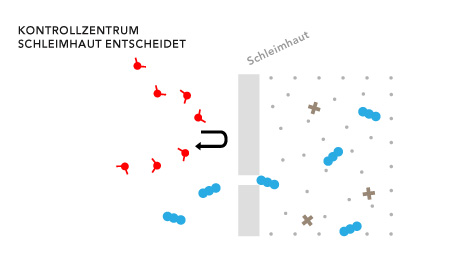Yesterday I ran over the pages of “Trends in Immunology” which I have a subscription of since many many years. It is definitely a journal of scientific reputation, and gives me a good possibility to follow the drifts in upfront immunology. Long before I got involved with biestmilch in 2000 I am interested in the big unsolved health topics of today. In the current issue I found an interesting article* about the consequences of a modern lifestyle. Since the break-down of the East block we have many people with migration background in Europe, and this allows scientists to study the epidemiology of chronic diseases and their association with environmental differences on a much larger scale than before.
By now it is general knowledge that chronic diseases like allergic disorders, chronic inflammatory and autoimmune diseases such as multiple sclerosis, Crohn’s disease, type 1 diabetes experience an unprecedented emergence in high income regions, while in parallel there is a decline of infectious diseases like hepatitis A, pneumonia, tuberculosis, malaria, dysentery or helminth infestations, all illnesses that constitute still a profound threat in developing countries.
These observations are so obvious to us but they are far beyond of being understood by science in all details and not mention to be solved. It was first noticed in the 1960s that an astounding increase in asthma, type 1 diabetes and multiple sclerosis accompanied by rising incidences of hay fever and atopy occurred. Studies give evidence that individuals having multiple or older siblings, or having stayed in daycare are more likely to be protected against asthma and atopy. The same applies to people who grew up in farms. The proximity to livestock and the exposure to non-pasteurized milk seem to protect against asthma, allergic rhinitis, and inflammatory bowel disease, but not against typ1 diabetes or rheumtoid arthritis. All these observations led to the hygiene hypothesis as a dominant explanatory model and to the immune system to be seen as a regulation system among immunologists since the late 1980s, not so among physicians and those affected. In this field still the immune system is still considered as a defensive system only, and hygiene is a major approach to prevention.
New scientific data prove this view to be so wrong, and not only wrong, but harmful. Upfront scientists already take the next step and extend the hypothesis to lifestyle changes in general while mainstream medicine and media stay behind and still preach the immune system to be a defense system solely and hygienic measures to be the solution for our health issues. If we were finally ready to accept that our lifetsyle causes chronic illness – not eternal youth – then the solutions for our massive health problems may eventually come closer. Sadly enough, this seems not to be the case.
Viruses, worms and bacteria are all known to protect us against chronic inflammatory diseases. Clean water supply, sanitation, antibiotics, vaccinations on the one hand, pollutants, nutrition like convenience foods, changes in our microbiotic environment (our gut harbors more than 10¹³ microorganisms, and 1000 different species, weight of 1kg) seem to be environmental stress on the immune system and the barrier organs lung, skin and gut. Of course, there is a genetic aspect to it as well. Our genetic outfit is under continuous pressure from from the inside and the outside, and therefore it changes for the good and for the bad, changes happen, the direction of the genetic drift taking place is unpredictable for us.
What we have got now and suffer from is an immune system that lost its capability to regulate the inflammatory conditions in our body adequately. It obviously lacks signals that are needed to bring the balance back. An important signal source are the microbiota that inhabit the barrier organs eyes, mouth, lung, gut and skin etc.. They kick in the innate immune system and they induce well-balanced immunity along all mucosal linings.
I hope that all these changes that are ongoing in immunology penetrate the general knowledge of people. If it happens that the immune system is accepted as a regulatory system, then therapy strategies for chronic inflammatory diseases will change sooner or later too, and then biestmilch will be seen as serious therapeutic option, not questioned anymore.
*Ehlers St, Kaufmann StHE: Infection, inflammation, and chronic diseases: consequences of a modern lifestyle. Trends in Immunology, 31(5): 184-190, 2010






Poker is an great Sport however you have to learn the Policies.
On the other hand, providers may trade their technical expertise for a steady stream of labor as well as decent spend. A large level of essential effort is generated.